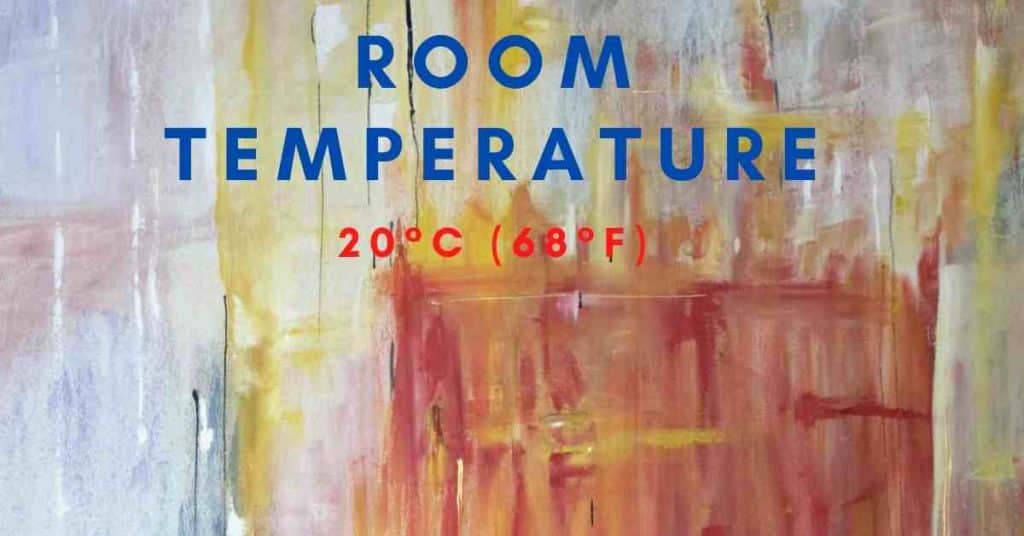Room temperature (RT) refers to the range of temperatures in which human beings are comfortable. According to the World Health Organization (WHO), a minimum [1]. It has no specific value, normally it is between 20 and 25°C (68 to 77° F).
| Room temperature in Celsius | 20 °C to 25°C |
| Room temperature in kelvin | 293 K to 298 K |
| Room temperature Fahrenheit | 68 ° F to 77° F |
Table of Contents
Room Temperature Values of a Typical Home
- 20–22 °C (68–72 °F) (According to American Heritage Dictionary)
- 20 °C (72 °F) (According to Oxford English Dictionary)
- 15 to 25 °C (59 to 77 °F) (According to Merriam-Webster definition)
Key Points
- Room temperature is a comfortable temperature that is not too hot or too cold for humans.
- A temperature at which a person isn’t either hot or cold when wearing ordinary clothing.
- It is not an ambient temperature.
- Ambient temperature refers to the temperature of the surroundings. This might or might not be a comfortable RT. It is measured by a thermometer.
Room Temperature in Science and Industry
- 25 °C (77 °F, 298.15 K) According to the International Union of Pure and Applied Chemistry (IUPAC)
- 20 to 25 °C (68 to 77 °F) (According to the pharmaceutical industry)
- 25 °C (77 °F) (According to U.S. Environmental Protection Agency (EPA)
What is Temperature?
Temperature refers to the measure of the hotness or coldness of a body.
It is a physical quantity that determines the direction of the flow of thermal energy.
Temperature is an intensive property—one that is independent of the quantity of matter being considered. It is measured by a thermometer.
What is Thermometer?
A thermometer is a device that is used to measure the temperature of a body. Common thermometers are usually comprised of a suitable thermometric material. A suitable thermometric material should have the following properties:
- Uniform thermal expansion
- Low freezing point
- Good conductor of heat
- Small specific heat capacity.
Conversion of Temperature Scales
If °F, °C, and T(K) represent the Fahrenheit, Celsius, and Kelvin temperatures respectively, then the following equations give the conversion of one temperature scale to another.
| Celsius to kelvin Scale | T(K) = 273+°C |
| Kelvin to Celsius scale | °C=T(K)-273 |
| Celsius to Fahrenheit Scale | °C = 1.8C +32 |
| Fahrenheit to Celsius scale | °C = (F-32)/1.8 |
Room Temperature vs Ambient Temperature
Ambient temperature (AT) is the actual temperature of the air (or surroundings) in any particular place, as measured by a thermometer. Whereas, RT refers to the range of temperatures that most people feel comfortable in.
Difference Between Room Temperature and Ambient Temperature
| Room Temperature | Ambient Temperature |
| Range of temperatures that most people feel comfortable in | The actual air temperature of an environment or surrounding |
| Often indicated by general human comfort, with the common range of 18°C (64°F) to 23°C (73°F), | Ambient temperature is measured by a thermometer |
| A term to denote a certain temperature within an enclosed space to which human beings are accustomed | Ambient temperature is important to Ensure that materials, such as food or chemicals, are stored safely. |
What is Heat?
Heat is a form of energy that is transferred from one body to another as the result of a difference in temperature. When we heat a body, the kinetic energy of its molecules increases resulting in an increase in average distances between the molecules increases due to an increase in momentum.
Difference between Heat and Temperature
| Heat | Temperature |
| Heat is the transfer of thermal energy between molecules within a system and is measured in Joules. | Temperature refers to the average kinetic energy of molecules within a material or system and is measured in Celsius (°C), Kelvin(K), or Fahrenheit (°F). |
| Heat measures how energy moves or flows. An object can gain heat or lose heat, but it cannot have heat. | Temperature is a quantity that determines the direction of the flow of thermal energy. |
| Heat is a measure of change, never a property possessed by an object or system. Therefore, it is classified as a process variable. | Temperature is a measurable physical property of an object—also known as a state variable. |
Factors affecting Room temperature
- Humidity
- Climate
- Heating/air conditioning settings
Summary
- Room temperature is normally between 20 and 25°C (68 to 77° F).
- There is no specific value of RT, it is the temperature range at which humans are comfortable.
- RT is not ambient temperature.
- Ambient temperature refers to the temperature of the surroundings.
- Temperature is the degree of hotness or coldness of a body.
Reference
- [1] WHO Housing and health guidelines. World Health Organization. 2018. pp. 34, 47–48. ISBN 978-92-4-155037-6.
Related Links
Frequently Asked Questions
The ideal temperature for the living room is between 19 °C and 22°C.
For the scientific purpose, according to the International Union of Pure and Applied Chemistry, RT is taken as 25 °C (77 °F, 298.15 K)

